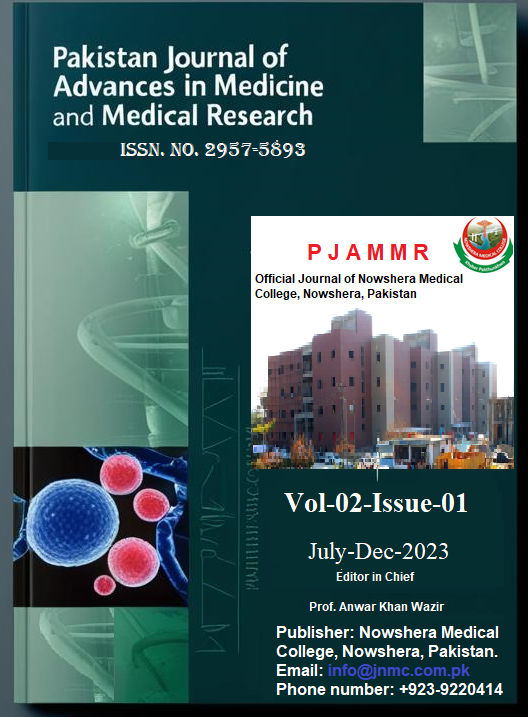Histological Analysis Of Enamel Microstructure In Response To Dietary Habits
Original Article
DOI:
https://doi.org/10.69837/pjammr.v2i01.35Keywords:
Enamel Microstructure, Dietary Habits, Comparative Histological Analysis.Abstract
Background: The protective role of enamel against physical and chemical injury is well documented. Despite being classified as connective tissue, with its composition and microstructure dominated by hydroxyapatite crystals, it is the hardest in the human body.
Objective: This study investigates the histological changes in enamel microstructure that occur when distinct populations follow different food habits.
Study Design: A comparative cross-sectional Study.
Duration and Place of the Study: This study was conducted at the Department of Pathology Watim Medical and Dental College, Rawat, from 03 June 2022, to 02May 2023.
Material and Methods: 300 dental examples were acquired from members having a place with one or the other, High Carbohydrate Diet Group (n=95): people accounting for their principle dietary consumption of high-carb nourishments like grains/pay/aries and starches. High-Proteins Diet Group (n=108): participants with the highest consumption of protein-rich foods, such as meat products, legumes, and dairy. Mixed Diet Group (n=97): People with intermediate consumption of carbohydrates, proteins, and fats. Subsequently, study participants were determined to best represent the two diet groups based on dietary surveys and medical histories.
Results: 300 participants are considered in this research, with the mean age of the group on HC totals 3.5 ± 1.3 years, HP group 3.4 ± 9.2 years, and MD group 3.6 ± 1.1 years. The gender distribution also shows similar characteristics; males are 55.8% in the HC group, 46.3% in the HP group, and 52.6% in the MD group; females are 44.2%, 53.7%, and 47.4%, respectively. Concerning the age range, the central cluster is 26-35 years old and 36-45 years old cohorts, which proves the majority of the middle ages.
Conclusion: Our results indicate that decomposition is a significant factor affecting enamel's surface morphology, structure, and health.
Keyword: Enamel Microstructure, Dietary Habits, Comparative Histological Analysis
Downloads
Published
How to Cite
Issue
Section
License
Copyright (c) 2024 Momina khadija Abbasi, Aiza saadia, Naila Abrar

This work is licensed under a Creative Commons Attribution-NonCommercial 4.0 International License.






